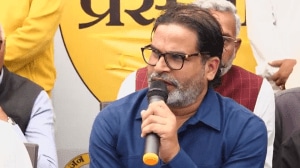Swallow prevention’ pill, be AIDS free
GENEVA, June 28: Hope and helplessness will clash for a week in this city as the only news coming out of the 12th World AIDS Conference will...

GENEVA, June 28: Hope and helplessness will clash for a week in this city as the only news coming out of the 12th World AIDS Conference will be that prevention is the only cure against the deadly infection. At least for now.
Any other cure is at least ten years away and life-prolonging therapy is beyond the most victims reach. The only way out therefore is education and information about how not to get the AIDS-inducing Human Immuno-Deficiency Virus (HIV). Beginning today and till next Thursday nearly 15,000 doctors, researchers, drug companies and activists will devote most of their time talking about preventing the spread of HIV, still the best-known and most economic defence against infection.
Alarming statistics have preceded the conference overshadowing all else. Estimates by the Joint United Nations Programme on HIV/AIDS (UNAIDS) and the World Health Organisation (WHO) indicate that nearly 4O million people in the world are HIV-infected and that the epidemic has claimed nearly 12 million lives.These deaths are not the last. The virus continues to infect 16,000 new people every day. In 1997 alone, there were 5.8 million new HIV infections despite the fact that more is known now than ever before about what works to prevent the spread of the epidemic. “Today although one in every 100 adults in the most sexually active age bracket (15-49) is living with HIV, only a tiny fraction know about their infection,” says a UNAIDS report. The virus can spread unobserved for many years.
“We have a more realistic appreciation of where we are in terms of treatment compared to were some people thought we were two years ago when hubris had taken over from facts…this will be the conference of new realism…of progress in prevention…but also the explosion of the epidemic in new areas of the world,” said Dr Peter Piot, executive director, UNAIDS.
The science in the conference will be dominated by the push to make life-prolonging treatment available where it matters most. Some drug companies believe thatuntil treatment is down to one tablet a day from the current pile of some 24, supplying drugs to developing countries will remain a myth. One drug, the AZT, is used in the industrialised world to reduce transmission from infected pregnant mothers to their babies. But the 12-week treatment costs $ 1,000. A vaccine, whenever it becomes available, will still not mean an end of AIDS virus, say experts. As the fold-out map of the UN report shows HIV infections are concentrated in the developing world, mostly in countries least able to afford care. “In fact, 89 percent of people with HIV live in sub-Saharan Africa and the developing countries of Asia which between them account for less than 10 percent of global Gross National Product,” says the UN. Africa is the worst hit. In Zimbabwe and Bostwana, one out of every four adults carries the HIV infection. But Asia, where taboos are as deep as ignorance, projections should make health authorities sit up. While India is nowhere near those figures, infection isbelieved to be galloping and estimates show that 4 million Indians are HIV-infected, making it the country with the largest number of HIV-infected people in the world.
Recent testing of pregnant women in Pondicherry shows infection rates of about 4 percent, the report says.





- 01
- 02
- 03
- 04
- 05


























